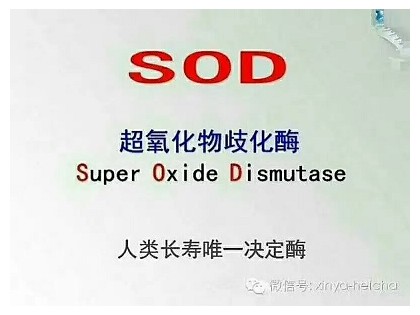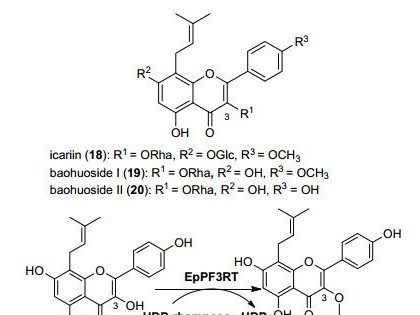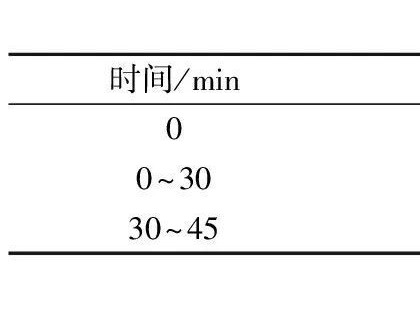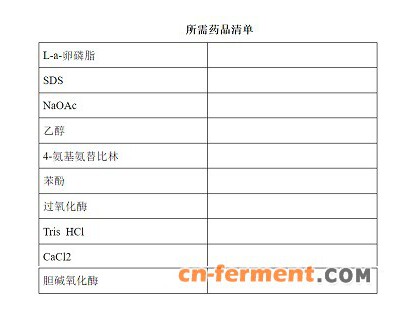Phytic acid(myo-inositol hexakisphosphate)is the primary storage form of phosphate in cereal grains,legumes,and oilseeds which are the principal components of animalfeeds.The phosphate moieties of phytic acid chelate are essential minerals and possibly proteins,rendering the nutrients unavailable.Monogastric animals are unableto metabolize phytic acid and largely excrete it in the irmanure,since they have only low levels of phytase activity in their digestive tracts.Livestock feed must be supplemented with inorganic phosphate since phosphorus is an essential element for the growth of allorganisms[1-4].Phytase(myo-inositol hexakisphosphate phospho hydrolases;EC3.1.3.8)catalyze the hydrolys is of phytic acid to the mono ,di ,tri ,tetra ,andpentaphos phates of myo inositol and inorganicphosphate.So phytase can make phytic acid inanimalfeeds become availa ble,and this willdecrease the feeds cost.Pytica acid isnot metabolized by monogastric animals,and the phos phate level in the manure can alsocreate disposal problems.The amount of manure produced worldwide has in creased significantly as a result of increased livestock production.Environmental pollution with high-phosphate manure has caused problems in various locations around the world due to the accumulation of phosphate,particu larly in bodies of water.Consequently,animalfeed distributors in Europe have be gun to formulate feed products with supplemental phytase in order to improve feedlot productivity and decrease phosphate waste[5-7].
There are some papers about phytase production with screened strain have published,but the enzyme activi ties were not veryhigh[6-9].So it isnot available in the actual use.The current commercial feed supplement is a recombinant phytase,but it is costliness and not easy to extend its use for the business purpose[10-12].So screening phytase high producing strains and investigating its production conditions become very important.Our group have obtained a phytase high-producing strain after screening and mutation,and also studied its optimum conditions for the phytase production.There sults showed that the production ability of this strain is high and very stable,and phytase can yield at a large scale.Hence,this solved the hard problem of industrial production.In this paper,phytase fermentation was carried out with the new strain Trichoderma viride LH374,and the fermenta tion condition was optimized on the bases of the 500mL shaken flask and 15L fermenter test results.
1 Materials and methods
1.1 Microorganism
A new strain of Trichoderma viride LH374,isolated by ourgroup,was used as the producer of phytase.It was grown at 37℃for 24h and maintained on nutrient agar slants at 4℃.
1.2 Culture medium
The standard fermentation medium for phytase production contained 5%(mass fraction)glucose,3%(mass fraction)tryptone,0.3%(mass fraction)NH4NO3,0.003%(mass fraction)FeSO4and0.003%(mass fraction)MnCl2. The pH was adjusted to 6.5 with NaOH[6,8].
1.3 Fermentation methods
The 500mL flask was filled with 50mL media(pH6.5),and inoculation amount is 5%.Cultivation was performed at 35℃ for 72h on a reciprocal shaker operation at 200strokes perminute.The 15L fermenter test was carried out under the condition of450r·min-1 and 35℃ for 72h[6,8].
1.4 Phytase analytical methods[10,11]
Phytase activity was measured by standard methods,fractions were rapidly evaluated by measuring the rate of p-nitrophenyl phosphate hydrolysis at 405nm with 10mmol·L-1 substratein 0.2mol·L-1 sodium citrate,pH5.5,at 30℃ with a plate reader(thermomax,molecular devices).Quantitation was based on a standard curve generated with a 10mmol·L-1 sodium monobasic phosphate standard.One unit is defined as 1nmol of inorganic phosphate released permin with 0.5%phytic acid in 0.2mol·L-1sodium citrate,pH5.5,at 37℃.
2 Results and analysis
2.1 Carbonsource
The glucose,sugar and starch were used as carbonsource.The result(Table1)showed that glucose was better than anyother carbon,and 5%(mass fraction)glucose was the best.

2.2 Organic nitrogen source
To investigate which organic nitrogen source was suitable for phytase production,tryptone,peptone and yeast extract were choosed.There sult(Table2)showed that tryptone and peptone were better than yeast extract,and 3%tryptone was the best.

2.3 Inorganic nitrogen source
To select a better inorganic nitrogen source,NH4Cl,(NH4)2SO4 and NH4NO3 were used respectively as inorganic nitrogen source,only NH4NO3 was available(Table3),anda plenty of phytase was produced,and the mass fraction of 0.1%,0.3% and 0.5% of NH4NO3 were tested,while the 0.3% was the best.0.1 % concentration of NH4NO3was not enough to meet the requirement of phytase synthesis,where as the 0.5%concentration inhibited phytase synthesis.

2.4 Metallic ion
Metallic ion Fe2+ and Mn2+ were added to the fermentation medium to assaythefermentation,and the result(Table4)showed that Fe2+ and Mn2+ could enhance the secretion of phytase respectively.When both metallicion were used at the same time,the quantity of phytase was more than that of single metallicion used respectively.

2.5 Initial pH
We used pH4.0,4.5,5.0,5.5,6.0,6.5,7.0,7.5as initial pH,the result(Fig.1)showed that initial pH6.5was the best,and the phytase activity can reach2490U·mL-1.Too low and too high pH were not good for the phytase production.

2.6 Fermentation time
We used 24,36,48,60,72,84,96,108 and 120h to investigate the optimal culture time.The result(Fig.2)showed that phytase can reach its maximum activity at 72h,and phytase would be decreased after 84h,so the optimal fermentation time was 72h.

2.7 Inoculation amount
We used 1%,5%,10%,15% inoculation amount to assay the fermntation,and the result showed that 5%inoculation amount was the best(Fig.3).48

2.8 Amount of liquid input
Dissolved oxygen had to be in a better level,too much or too less would be harmful.By our experiment(Fig.4),50mL medium in 500mL shaken flask made the phytase fermentation successful.

2.9 Phytase production
Based on the optimized condition of shaken flask assay,the phytase fermentation test were carried out 5 batches in 500mL shaken flask and 3 batches in 15L fermenter.The maximum phytase activity was 2510U·mL-1 and the average activity was 2490U·mL-1 in 500mL shaken flask.And the average activityin 15L fermenter was lower and reached 2010U·mL-1.
3 Discussion
Phytase is generally produced by submerged fermentation.In commercial practice,the optimization of medium composition is done to maintain a balance among the various medium components,thus minimizing the
amount of unutilized components at the end of fermentation.Research efforts have beend irected mainly towardse valuating the effect of various carbon and nitrogen nutrient cost-effective substrates on the yield of enzymes,requirement of divalent metal ions in the fermentation medium and optimization of environmental and fermentation parameters such as pH,temperature,aeration,and agitation.In addition,no defined medium has been established for the optimum production of phytase from different microbial sources[6,8].Each organism or strain has its own specialconditions for maximum enzyme production.Our group have obtained a phytase high-producing strain after a long time screening and mutation,and the liquid fermentation conditions for the phytase prodution were also investigated.The result showed that the producution ability of this strain is high and verystable,and phytase can yield at a large scale.Hence,this solved the hard problem of industrial production.The optimum conditions for the phytase production were as follows:carbon source was 5%(mass fraction)glucose,nitrogen source was 3%(mass fraction)tryptone and 0.3%(mass fraction)NH4NO3,and metallic ion was0.003%(mass fraction)Fe2+ and 0.003%(mass fraction)Mn2+.The 500mL flasks were filled 50mL media with pH6.5 to incubate 72h,and inoculation amount was 5%.Under this condition,Trichoderma viride LH374 was able to yield the maximum activity of 2510U·mL-1 phytase.
The present investigation is aimed at optimization of medium components(glucose,tryptone,NH4NO3andmetalions,etal),which have been predicted to play a very significant role in improving the activity of phytase.From reference,during growth on complexmedium(peptonizedmilkandyeastextract,etal),substrates were rapidly metabolized under high oxygen consumption,and biomass was formed.A three fold-higherspecific productivity was also found with the defined medium on glucose and pyhtaseas compared with complex medium with yeast extract and peptonized milk.An explanation might be that stringent starvation conditions are required:in defined medium the only organic substrates are glucose.Once they have been exhausted no alternative organic compoun disavailable to the cells.By comparison,in a complex mediums trict starvation conditions maynot apply after peptonized milk and yeast extract exhaustion[6,9].So our group used defined carbon(glucose)and complex nitrogen(tryptone and NH4NO3)as the main medium components for the phytase production,and the result showed this led to a good effect.But the detail research needed to investigate the relation between the defined medium and the complexmedium.
References:
[1]COWIESONAJ,ACAMOVICT,BEDFORDMR.Theeffectsofsupplementationofmaize baseddietswithexogenousphytaseonaminoaciddigestibilityandnitrogenretentionbyyoungbroilerchicks[J].BrPoultSci,2004,45(Suppl1):5-6.
[2]KRZYSTOFZ,DOROTAG,JERZYK,etal.Simultaneousapplicationofphytaseandphytasetobroilerfeedbasedonwheat:feedingexperimentwithgrowingbroiler[J].JSciFoodAgric,1999,79:1841-1848.
[3]LEENHARDTF,LEVRAT-VERNYMA,ChanliaudE,etal.ModeratedecreaseofpHbysourdoughfermentationissuffi cienttoreducephytatecontentofwholewheatflourthroughendogenousphytaseactivity[J].JAgricFoodChem,2005,53(1):98-102.
[4]LINJ,BPLLINGERDW,RLEDONXD,etal.Soakingincreasestheefficacyofsupplementmicrobialphytaseinalow phos phoruscornsoybeanmealdietforgrowingpigs[J].JAnimSci,1997,75:1292-1298.
[5]MAGUIRERO,SIMSJT,SAYLORWW,etal.Influenceofphytaseadditiontopoultrydietsonphosphorusformsandsolu bilityinlittersandamendedsoils[J].JEnvironQual,2004,33(6):2306-2016.
[6]NAMPOOTHIRIKM,TOMESGJ,ROOPESHK,etal.Thermostablephytaseproductionbythermoascusaurantiacusinsub mergedfermentation.ApplBiochemBiotechnol,2004,118(1-3):205-214.
[7]WYSSM,BRUGGERR,KRONENBERGERA,etal.Biochemicalcharacterizationoffungalphytases(myo inositolhexaki sphosphatephosphohydrolases):catalyticproperties[J].ApplEnvironMicrobiol,1999,65(2):367-373.
[8]PORTZL,LIEBERTF.Growth,nutrientutilizationandparametersofmineralmetabolisminNiletilapiaOreochromisniloticus(Linnaeus,1758)fedplant baseddietswithgradedlevelsofmicrobialphytase[J].JAnimPhysiolAnimNutr(Berl),2004,88(9-10):311-320.
[9]SEQUEILHAL.PurificationandpropertiesofthephytasefromSchwanniomycescastellii[J].JFermenBioeng,1999,74(1):7-11.
[10]XIONGAS,YAOQH,PENGRH,etal.Isolation,characterization,andmolecularcloningofthecDNAencodinganovelphytasefromAspergillusniger113andhighexpressioninPichiapastoris[J].JBiochemMolBiol,2004,37(3):282-291.
[11]ZININNV,SERKINAeAV,GELFANDMS,etal.Genecloning,expressionandcharacterizationofnovelphytasefromObesumbacteriumproteus[J].FEMSMicrobiolLett,2004,236(2):283-290.
[12]ZYLAK,MIKAM,STODOLAKB,etal.Towardscompletedephosphorylationandtotalconversionofphytatesinpoultryfeeds[J].PoultSci,2004,83(7):1175-1186.






